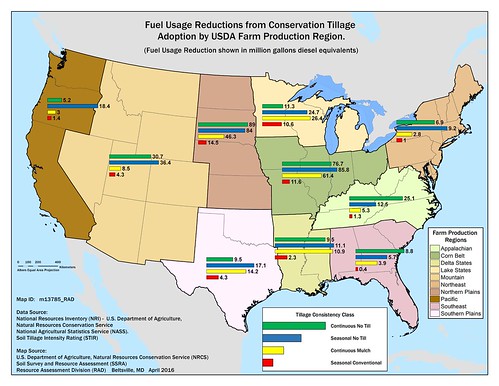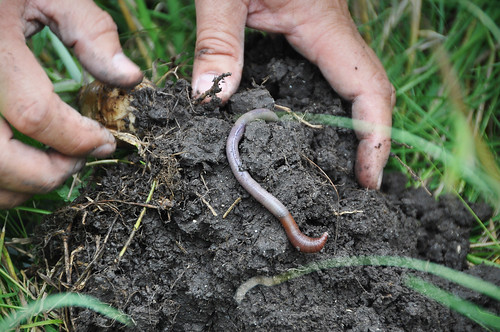
For farmers across the country, it comes as no surprise to hear that conservation tillage practices – particularly continuous no-till – can save time and money compared to conventional tillage. The potential benefits of no-till are well-documented, from improving soil health to reducing annual fuel and labor investments.
Still, continuous no-till has been adopted across only 21 percent of all cultivated cropland acres in the United States. Why? One concern involves money saved compared to money spent. Can fuel and labor reductions really make up for the money invested in switching to a new farming practice?
To help farmers answer this question, the Natural Resources Conservation Service (NRCS) Conservation Effects Assessment Project (CEAP) conducted an annual fuel savings study comparing gallons of fuel used in conventional tillage practices to gallons used in conservation tillage practices like seasonal and continuous no-till.
We hope the results will help farmers weigh their options when considering adoption of conservation tillage practices.

Fuel saved is money saved.
On average, farmers practicing continuous conventional till use just over six gallons of diesel fuel per acre each year. Continuous no-till requires less than two gallons per acre. Across the country, that difference leads to nearly 282 million gallons of diesel fuel saved annually by farmers who practice continuous no-till instead of continuous conventional till.
Farmers who manage at least one crop in their rotation without tilling – seasonal no-till – save an additional 306 million gallons of fuel annually.
These savings add up for individual farmers.
Let’s assume an average off-road diesel fuel price of $2.05 per gallon. If a farmer farming 1,000 acres of crops switches from continuous conventional till to continuous no-till, he or she saves 4,160 gallons of diesel fuel – more than $8,500 worth – each year.
Just switching from continuous conventional till to seasonal no-till saves a little more than 3.2 gallons of fuel per acre. Across 1,000 acres, that equals roughly $6,600 worth of fuel saved annually.
Saving time and improving soil health lead to additional economic benefits.
No-till has significant economic benefits beyond reduced fuel usage.
A farmer who plows 15 acres per hour, for instance, would save roughly 67 hours of work with each eliminated pass over a 1,000 acre field by adopting no-till. Depending on labor costs and equipment maintenance, that’s an additional several thousand dollars saved each year.
Fields managed using no-till for multiple years generally have a higher water holding capacity than conventionally tilled fields. This is particularly valuable in drought-prone areas, where lack of water is a major concern tied to crop loss. No-till adoption also reduces soil erosion, increases soil biological activity and increases soil organic matter. These benefits can lead to additional economic gains for farmers over time.
We’re here to help.
At the NRCS, we understand that farmers need to care for their bottom line while caring for their land.
Visit our website or your local service center for more information about integrating conservation practices like no-till into your management plan. To learn more about CEAP and our commitment to improving conservation strategies across America’s working lands, please visit NRCS’ Conservation Effects Assessment Project page.



